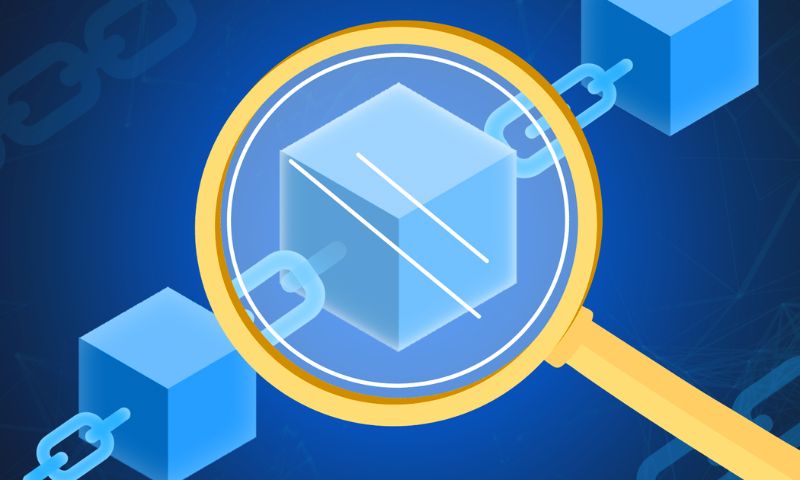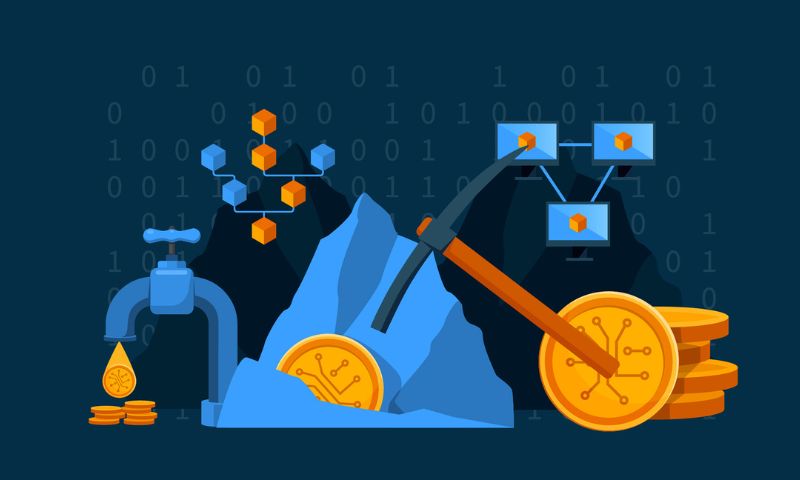Beyond the Hype: Factors to Consider in Crypto Fundamental Analysis
Investing in crypto is not just about chasing trends. It’s essential to dig deep and study factors to consider in crypto fundamental analysis. You want to make smart choices, right? I’m here to walk you through what really matters. Look beyond flashy headlines. Get to know the real value of cryptocurrencies. Spot the critical market signs and the buzz around what developers are doing. Let’s talk about economic models and the chances of making a profit. We won’t ignore the tech stuff either. How safe and solid are these smart contract codes? What’s new and what’s next for them also counts. Don’t miss out on network health and how many use it. Wallet activity and dealing amounts can tell us a lot. Can this technology handle growth down the road? That’s on the agenda too. And let’s not forget the law. Crypto has to play by the rules, from token types to keeping bad actors out. Legal stuff can make or break these projects. Join me, and we’ll cut through the fluff to focus on what truly drives your crypto investments.
Understanding the Underlying Value of Cryptocurrencies
Analyzing Market Signals and Developer Activity
What do we peek at first in crypto? Market signs and the folks who build it. These shine a light on crypto worth. We want to see busy developers and smart code changes. They tell us the project’s pulse is strong. We investigate things like how often they commit code and how they tackle bugs. The scent of coffee by their desks late into the night may be a good sign.
Next, how do people act on the market? High trading can mean a thumbs-up from buyers. It says this coin may not just sit in a corner. We weigh it like fruit at a market—does it feel right? We pore over the numbers: active wallets, dough flowing through. These numbers do a little dance, telling us stories about health and buzz. Dive deeper, and it’s about reading the room. What’s hot, what’s not.
Evaluating Economic Models and ROI Potential
Now, let’s get down to brass tacks. ROI, or return on investment, matters a lot. Put in a buck, how much could you get back? Not just a guess, but dug out from the roots—the core of their plans, their value, their dreams. This is the X-ray vision we need.
We scan their roadmap and whitepaper. It’s their battle plan and their promise. How do they plan to win? What’s their weapon in this loud, crowded crypto war? Tokenomics is that weapon’s make and model. It counts the coins’ beats—a limited number could mean its value will soar, or at least that’s the bet.
Think of a coin—utility or security? It’s like asking, “What’s this tool for?” A utility token’s like a ticket to a cool club. A security token, though, promises a piece of the pie. Different paths, different rules.
Every coin whispers its own tale. Some boast of smart contracts that could charm a snake. Some point to a network buzzing like a beehive. Others are silent, waiting for a spark. We lend an ear to all, sifting for gold. We check how they fit with the law—will Uncle Sam nod or wag his finger? We guess and check, then guess and check again. It’s like the weather—hard to peg, but worth the effort.
Money talks but also listens. Before cashing in, we listen hard. We analyze, we watch for flags—red or green. We turn every stone, we question every stat. We are detectives in a digital world, hunting for truth among the bytes. When you get this, you get the crypto heartbeat. And that heartbeat—it’s the drum to which money dances.
Assessing the Technicality of Smart Contract Implementations
Reliability and Security of Smart Contract Code
Smart contract code is the backbone of any blockchain project. It decides how a project runs and if your funds are safe. For most of us, smart contract code might seem like a foreign concept. But it’s less complex than it sounds. Smart contracts are like vending machines. You put something in and get what you asked for without any hassle.
When we talk about a smart contract’s reliability, we mean can we trust it to work as promised? Security is easy to grasp too. It’s all about keeping hackers and bugs away. Think of it as a vault that keeps your valuables safe.
Picture this: a new cryptocurrency project is like a brand new car. You’d likely want to know if it’s safe to drive and won’t break down on you. Similarly, before you invest in a crypto project, check the smart contract’s code. How? Well, look for audits by reputable firms. These audits are like having a mechanic check out that car before you buy it. They’ll tell you if there are any issues to worry about.
A project with smart contracts that haven’t been checked over is like crossing a bridge with no safety checks. You wouldn’t want to take that risk, right? So it pays to play it safe and look into how a blockchain’s smart contracts are built and protected.
Innovations and Future Directions of Smart Contracts
Smart contract tech is always growing. New features could change how we use the blockchain. New layers built atop existing ones can speed up transactions. They can even reduce the fees you pay.
Think of blockchain like a city with many roads (layers). Some are full of traffic, like the first layer, where most activity happens. But imagine if you could use a special road above it all that lets you skip the traffic? That’s what these layers are like.
Smart contract upgrades are exciting because they bring new ways to use blockchain. For instance, a smart contract could help you rent a house, bond with other users, or even vote all without middlemen. It’s not just about money anymore. It’s about doing things faster and with trust built-in.
Upgrades also might mean that more people will start using blockchain tech. Just like when phones moved from flip to smart, more folks came on board. If that happens here, who knows how far this could go?
What’s even cooler is seeing how this can change industries beyond finance. We could see changes in how we vote, buy houses, or even track food from farm to store shelf.
In short, smart contracts could well be the game-changer in making blockchain a part of our daily lives. Keep your eyes open for smart contract news — it’s a sign of where blockchain is heading next.
Analyzing Blockchain Network Health and Adoption
Interpreting Active Wallets and Transaction Volumes
Think of blockchain like a busy city. Active wallets are its people, always on the move. More active wallets mean more people are using the crypto, much like a favorite city hotspot. Wallets show us who’s buying, selling, or holding crypto. Each trade, each deal, each save – that’s a wallet in action.
Transaction volumes are the total sales in our city. They show money flow, like how busy shops are. High volumes can mean a strong market, like a shop with lines out the door. Low volumes might signal trouble ahead, like a shop with dust on the shelves.
Together, these two tell us about network health and faith in the crypto. If lots see value and trade often, it’s like a city alive with buzz. But the opposite can signal problems we need to fix.
Predictive Assessments of Network Scalability and Trends
Now, how about tomorrow? Can our city handle a festival or a big convention? In crypto, that’s network scalability. It’s about how well the blockchain can grow. Can it take on more traders, more money, without a hitch? Or will it slow down, like traffic jams blocking our city?
We also watch trends, like fashion in a city. It’s about spotting what will be big news. For example, if more folks talk about a crypto on social media, it could become as popular as the newest phone everyone wants. If big-name stores start to take that crypto, it’s like a top chef opening a new restaurant. Everyone talks, everyone watches.
To decide if a blockchain will last, look at how it deals with more action without breaking a sweat. Check if it stays on top of trends, like being the place everyone wants to visit. That’s our sign of a city – I mean blockchain – that’s not just surviving, but thriving.
Navigating the Regulatory Landscape in Crypto
Understanding Compliance in Token Classification and KYC/AML
Here’s the deal: laws shape the crypto world big time. A token can be a “utility” or a “security.” Utility tokens work like arcade tokens. They let you use services on a blockchain project. Security tokens are more like stocks. They might give you a part of a company.
Now, ask me, “Is getting this right important?” Yep, it is! If a token’s a security, it must follow strict rules. If a project calls a token a utility to skip rules but it’s really a security, they’re in hot water. It’s central to get this right from the start.
Next up, we’ve got KYC and AML. Know Your Customer (KYC) means a project must know who’s buying their tokens. Anti-Money Laundering (AML) stops bad folks from cleaning dirty money through crypto. Projects that don’t follow KYC and AML can get shut down. That’s why they play nice with rules.
As a crypto expert, I dig into a project’s papers. I check they’re playing by the book. Smart projects know good compliance can actually help them grow. It’s no place to cut corners!
The Role of Legal Frameworks in Shaping Blockchain Project Success
Here’s a slice of truth: good laws help crypto projects go far. When governments make clear, fair rules, it’s easier for projects to succeed. It helps keep scams out too, making folks trust crypto more.
Now think about how laws change. They change a lot! My job is to keep up with this stuff. I make sure projects don’t trip on the rules and hurt their knees.
So, I look at where a project is based. Then I learn what the government there says about crypto. Sometimes, I find cool things. Like in some places, blockchain gets a friendly hello. This helps those places’ projects kick off right.
But laws can be tricky. They differ all over the world. What works here might not fly there. This takes smart thinking and help from legal pros. They team up with blockchain whizzes to make sure projects stay in the clear.
Best part? When a project nails this, they look real good to investors. That’s how they pull ahead in the big, wild crypto race.
Now let’s remember, it’s not just about dodging trouble. Laws have a big part in shaping the future. They guide what projects can do next. And that can open doors to new chances you wouldn’t believe!
In the end, crypto’s not just tech and numbers. It’s about knowing the law and playing the game smart. That’s how you spot the winners in a crowd of wannabes. It makes all the difference in the crypto universe.
In this post, we’ve dug deep into what makes cryptocurrencies tick. From how markets and coding impact their worth to the way real people and laws shape their future. Smart contracts got a close look too, showing us what makes them tick and where they’re heading. We peeked at blockchain networks, checking out just how many people use them and how they’re growing. Plus, we didn’t forget the rules—knowing the law is key for crypto to thrive.
Here’s my final nugget of wisdom on this: getting crypto means more than just watching prices. You gotta understand what’s under the hood, how it connects with folks, and how it fits with the rules. That’s how you really get the big picture. So, take these insights, and use them to make smart choices in the wild world of crypto. Stay curious, stay informed, and you’ll be set to ride the highs and lows of this digital frontier.
Q&A :
What are the key elements of fundamental analysis in cryptocurrency?
When performing fundamental analysis for cryptocurrencies, it is crucial to examine a variety of elements to determine the underlying value of a digital asset. These elements include the project’s utility and use case, technology and scalability, team and developer activity, community and network effect, tokenomics including the supply and distribution, partnerships, collaborations, regulatory environment, and competitive landscape.
How do you assess a cryptocurrency’s utility and use case?
Assessing a cryptocurrency’s utility and use case involves looking at the problem the project aims to solve and its potential to create value for its users. Analysis should focus on the actual application of the cryptocurrency, the demand for its use, and the real-world problems it addresses. The project’s whitepaper and development updates are key documents to review for this information.
Why is the development team important in crypto fundamental analysis?
The development team is a critical factor in crypto fundamental analysis because their expertise, experience, and track record can significantly impact the project’s success. By evaluating the team’s background, transparency in communication, and previous accomplishments, investors can gauge the team’s capability to achieve the project’s goals and respond to challenges.
How do tokenomics influence cryptocurrency valuation?
Tokenomics refers to the economic model of a cryptocurrency and includes aspects like the total and circulating supply, token distribution, allocation, and any mechanisms for burning or minting new tokens. Understanding tokenomics is essential as they can influence scarcity, incentive structures, and the long-term viability of the cryptocurrency, directly affecting its valuation.
What is the significance of community and network effect in analyzing a cryptocurrency?
Community strength and the network effect are significant because they indicate the level of engagement and the expansion potential of the cryptocurrency. A strong, active community can provide a foundation for growth and user adoption, while a robust network effect, where the value of the service increases as more people use it, can signal a cryptocurrency’s increasing utility and potential for long-term success.






